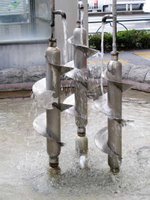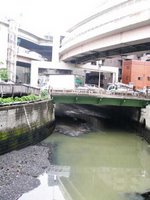Project Progress
By revisiting my block, I've noticed that it's not as quiet and abandoned that I thought it was. People were around this time, mostly waiting for others by reading or talking on their phones. There were skateboarders and a bunch of homeless. It's wierd. I still can't quite place my thesis for my project. I think that it will have to do with the wierd contradictions of the park.
I notice how people flow through the park yet some have to stay. Few actually enjoy it. Space is so scarce here within the city yet here is a bunch that can't be used because of the freeways overhead. It seems kinda sad. Like the homeless are also displaced. Most of the people around are rushing to get somewhere and pass the park, yet the homeless have time but no place to go. There's a sign that talks of preserving the natural world for future generations, but the park is all concrete.
I notice how people flow through the park yet some have to stay. Few actually enjoy it. Space is so scarce here within the city yet here is a bunch that can't be used because of the freeways overhead. It seems kinda sad. Like the homeless are also displaced. Most of the people around are rushing to get somewhere and pass the park, yet the homeless have time but no place to go. There's a sign that talks of preserving the natural world for future generations, but the park is all concrete.


